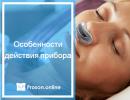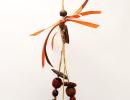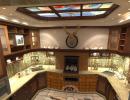Gymnastics for the treatment of osteochondrosis. Requirements for therapeutic physical education. Methods of regular exercises.
The diseases of the spine are complex in nature. If you do not engage in their treatment, then a person can remain a fixed disabled person. Therefore, the diseases of the spine should be treated starting with the easiest degree of development. For example, exercises for lumbar osteochondrosis allow you to restore the mobility of the skeleton, as well as reduce the intensity of pain.
Panner's disease, which resembles a primitive osteochondrite of the hip joint, is a benign evolution. At the wrist level, Dorsei flexion voltage is most dangerous. Pathologists arising from this repeating microtrauma are different, in particular: the pain of growth cartilage, a fracture of lapaphideous fatigue, auxulary necrosis, synovit, instability, damage to ligaments and deformation of Madeja type.
Pathology of overload and overwork the spine. The re-injury of the spine, in particular with hyperthexia, is the cause of the pathology of the lumbar disk. The hernia disk is rare and meets mostly in adolescents. With symptoms, the rigidity of the spine prevails and rarely on neurological features. A leaf fragment is broken, realizing the real epiphyseal detachment raised by the ring and the rear general vertebral ligament, another mechanism will be the collapse of the intra-high hernia nucleus. In most cases, surgical treatment is required.
What is a pathology, and what is its forecast?
This is a complex disease, which is characterized by deformation of intervertebral discs, erasing the cartilage tissue, with a decrease in the lumen between the vertebrae. As a result, an inflammatory process appears in the spine, which accompanies pain, limiting mobility.
Ischmic pathology occurs more often in hyperstlatures in expansion. Spondylolysis or or Creative lysis - pathology of the erected station, which is visible only after 5 years. The incidence reaches 6%. It can be a dysplastic or mechanical limitation, it is usually mixed. Hypercolitics, favorable children's hyperstabilities, can lead to the destruction of the voltage, which, if it is isolated, is not accompanied by a displacement. Sports under threat: diving, gymnastics, skiing, athletics, football, judo, tennis, fencing, figure skating.
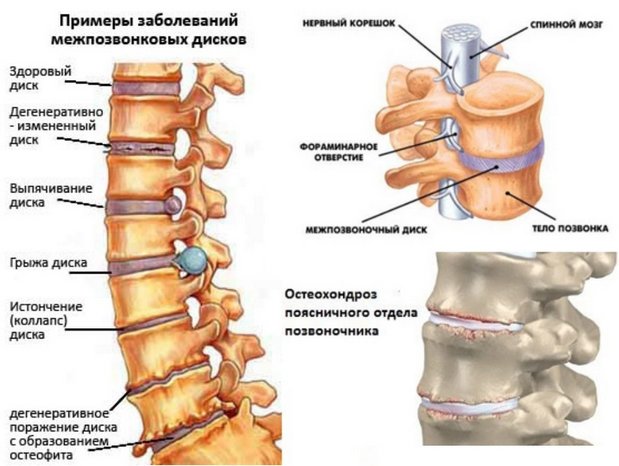
Most often a disease is developing in people in the age range from 40 to 60 years, but now osteochondrosis has a tendency to "rejuvenation". If you treat pathology irresponsible, then the following consequences may arise:
In all symptomatic cases, careful clinical and radiographic monitoring is required. Schoireman's disease itself is not the pathology of the sports child, but this spinal growth dystrophy corresponds to the suffering of spinal growth zones, so an overload sport should be avoided. However, this may and should be carried out by these children, which can be installed in the corset. Corset is not a contraindication for sports. It can be removed to practice certain sports in danger or in the pool.
- Ishiagia.
- The hernia of intervertebral disks.
- Spinal artery syndrome.
- Loss of performance and disability.
The best remedy for osteochondrosis of the lumbar spine is prevention. However, if the disease is already beginning to develop, the treatment must begin immediately.
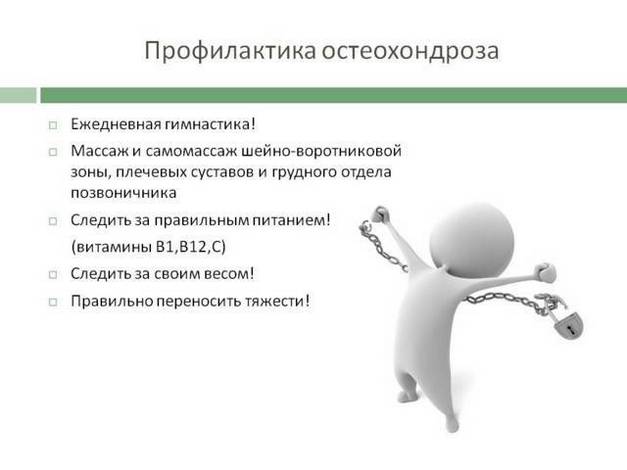
These instructions are valid for scoliosis, which is not a contraindication to sports, regardless of its evolution, with the exception of particularly severe cases. Lumbar front osteochondrosis of the spine. Lumbar front osteochondrosis of the spine creates certain problems. It is a true osteochondrosis without kyphosis, wedge, with shortory nodes, compressive disc and intra-freed hernia. Radiographic images due to bone tears from excessive thrust of the front ligament do not change and disappear gradually.
The latter is hard to treat. Avoid excessive sports. Pathology of overload and excessive thigh voltage. The hip joint, like other joints, may become a victim of microeraumamamism, the treatment of which is simple other and anti-inflammatory means. The inability to overturn the neck of the femur in excess or decrease has fundamental anatomical consequences that require functional devices. There are no sports testimony to correct the morphothype.
In what cases do the physical complex can not be performed?
With osteochondrosis, which is localized in the neck or lumbar department, the patient is offered a set of exercises that will contribute to the normal restoration of the mobility of the skeleton.
But in some cases, physical charging or facility is contraindicated. You can not do exercises if the patient has been observed:
The pain of overvoltage of the hepatic camel muscles, localized on the buttocks, does not well affect the stretching and painkillers and anti-inflammatory treatment. However, caution should be exercised to detect a more serious condition. Emergency and fatigue fractures are already described.
Pathology of overload and overvoltage of the knee. The knee is the target of 25% of sports injury. Radiography is aimed at removing tibia spikes. Long-term results conservative treatment Poor. Partial partial messecetomy or arthroscopy should be encouraged. Some peripheral lesions can be healing with immobilization for 4 weeks. The dissecting osteochondrite of the teenager knee can in some cases have a traumatic origin. Repeated injury at the athlete was incriminated.
- Various length limbs.
- Mental disease or disorder.
- The overall serious condition of the body.
- Venous stagnation syndrome.
- Intervertebral hernia. In this case, the exercises will contribute to it.
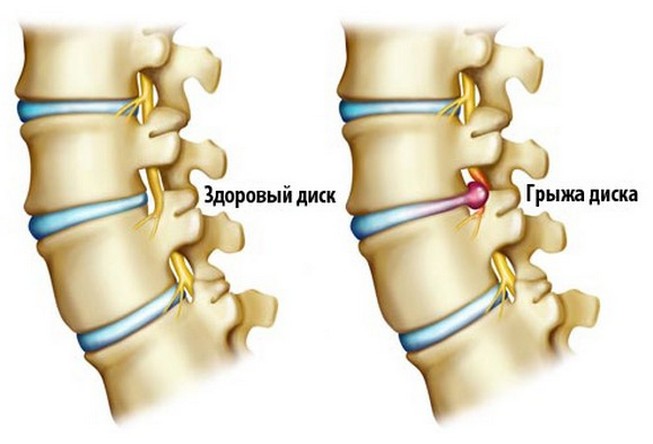
The risk lies in the release of osteochondral fragment in articulation and lesions of the articular surface. It is 3 times more often in boys and in bilateral patients in 20-30% of cases. This is a chronic painful knee with sometimes repeated discharge, restriction of mobility and amyotrophy. Radiography should look for a lacuniary, as a rule, the inner femur. Strict immobilization is no longer required. The articulation may need to be protected from discharge, but it must be mobilized to maintain the articular surface.
- Malignant tumor or benign neoplasm.
- Hypertensive crisis. Here the patient's condition can seriously deteriorate.
- Increased body temperature.
- Inflammatory pathology, which is characterized by too high leukocyte levels.
- Acute period of cardiovascular disease.
- Anemia or a state that threatens the development of strong bleeding.
Features of the gymnastics
Despite the way that the patient performs the patient: Charging or therapeutic physical culture, they need to be done correctly. First, those movements that carry the minimum burden on the lumbar spine will be carried out. That is why the first exercises of the physical complex are made from the position of "lying on the back".
Ortesa orthoses can be used with limited mobility. Sometimes a arthroscopic assessment is necessary. If a free fragment is resting or deleted. Overload and overvoltage ankle and foot. Limiting activities is mandatory in all cases.
Obviously, he passes through the adapted training of coaches. However, the doctor must inform parents and inform them. It is necessary to adapt the sport to the child, and not the opposite. If the child has no size or weight of its age category, it should be moved, and not at risk of an accident.
It is strictly forbidden to perform such movements such as flexion and extension of the lumbar spine. This will lead to the appearance of pain and deterioration of the overall state.
Complex exercise You must do regularly, daily. At the same time, you should not detain your breath. It is necessary that the lungs filled with air uniformly. Thanks to the implementation of the charging and exercise of the exercise of the exercise, it is possible to significantly increase the lumen between the vertebrae.
Osteochondrosis is a cunning disease. It is necessary to relate to it as serious as possible. Even complex medical exercises It should be done only after agreeing with the doctor.
Lyumbago should be avoided by keeping his lumbosacral hinge. Rules for rest and diet must be observed, especially in athletes high level. Intensive learning requires weekly medical observation. Training time must be limited by law. It is estimated that 1 hour per day is a maximum of 10 years, 2 hours a day to 15 years and 3 hours a day to 20 years.
Protection does not exclude danger, but may limit the severity or number of injuries. Warming, stretching and repeating movements are the basis of good preparation. Perfect age For the acquisition of motor and sports skills, it begins for about 6 years and continues until the start of puberty. Up to 6 years we can not talk about sports practice. Between 6 and 9 years it is necessary to develop a variety of activities a variety of people who contribute to gestures and socialization. At the age of 9 to 11 years old, it is necessary to develop the possibilities provided by diverse and moderate preparation, better orient children depending on their age than their civil age. Including changes in puberty, psychological fragility and retraining is not recommended.
There are also such features of charging:
- Each exercise should be done at a slow pace. The load must first be minimal. If the pain appears, and well-being deteriorated, it is necessary to return to the previous charging option.
- If, during such treatment, the patient appears pain in the lumbar department, you should urgently consult a doctor.
- Each exercise should be performed in several approaches. It is necessary in order not to overload the spine. The whole complex is stretched for 10 minutes - half an hour.
If it is not entirely clear how to do physical exercises, you can watch the video in this article.
In the pubertal phase, this is the age of progressive sporulation to phase after Pubertata, if the child expresses the desire of this specialization. High-level sports runs in phase after puberty. The lower resurrect department of the spine is very tense with the vertical foot of the person. Degenerative disorders are associated with age and weight and are very common in small expressions. It is not about whether they are developing, and not rapidly progressive stenosis, and if it causes clinical disorders.
With a vertical posture and proper work of the spine, you can gently feed your back and help a little "to stay as long as possible in a state of health and without pain." That is why effective and strong muscle The back is an important factor. It is often found in the elderly, especially at the lumbar spine.
Performing exercises lying on the back
This complex is the easiest for the lumbar spine during osteochondrosis:
- First you need to dilute your arms to the sides, and the legs bent in the knees, lift it so that they are at an angle of at least 90 degrees from the body. On the exhalation, the limb is straightened, and in the breath bends. Legs must be alternating.
- Legs should be lifted a little, bend in the knees. Hands are divorced to the sides and rest about the floor. The patient must imitate riding a bike.
- Hand fingers need to be connected to the castle, put a palm under the head. Feet at the same time rest in the floor. Inhale: The upper part of the body and the head is lifted. Exhalation - come back to its original position.

The most interesting segments are between the third and fourth lumbar vertebrae and between the fourth and fifth. Clinical diagnosis at the beginning is atypical. Functional disorders and pain or even irritation of ischemic nerves can be traced to very different pathological changes in the lumbar spine. The symptom of the spinal chromotype is typical for spinal stenosis. The patient complains of pain in the front and hind legs, stretching slightly.
As part of the usual aging process, intervertebral discs are reduced to height and may occur with intervertebral osteochondrosis; On the one hand, to the improvement of the intervertebral disk, on the other hand, to the removal of the bone on the bodies of the vertebrae. Later, small joint joints of the vertebral arch appear. This combination causes the formation of a restriction on the hourglass of the spinal canal.
- Feet to dilute on the width of the shoulders, and the hands are a bit arranged on the sides. The simultaneous rotation of the hands and feet brushes begins.
- Put your arms along the body, and legs straighten. Inhale - the muscles of all extremities are strained. At the same time, the feet bend, and the fingers are compressed in fists.
- Hands dilute to the sides. Next, one leg raise and make circular movements. Rotation radius must be maximum. Number of repetitions: 4 times for each leg.
- Put the legs on the width of the shoulders, rest in the floor, and the hands stretch along the body. Inhale - basin slowly rises, and the muscles of the buttocks and the lumbar department are strained. Exhaust - the initial position is taken.
- Alternated lifting straightened legs over the floor. The lifting degree is 80-90 degrees.
- In the breath of hands, you should slowly raise and pull them up. On the exhalation, the leg bent into the knee should be tightened to the chest and hug it. The limbs must be alternating.
This set of exercises during osteochondrosis contributes to the stretching of the spinal column, a decrease in pain in the lumbar part. In addition, it can be used to prevent osteochondrosis.
Stenosis has different forms. Sometimes a relatively intact intervertebral disc moves and slides of the Block. Thus, the spinal channel is put forward for one side, and explicit disorders arise. Stenosis is often developing gradually and progresses with another speed. After a few years, you will not notice anything worse. Neurological dysfunctions are rare.
In extreme cases, the patient can walk only less than 100 m; In this case, further diagnosis and special therapy is necessary. At the same time, the entire existing range of analgesic therapy should be used. This is often necessary in order to make the target learning method in the first place. The most important type of treatment is physical measures, such as relaxation exercises, electrotherapy, as well as in therapeutic physical culture, and not using analgesics. However, this treatment does not always benefit from any pathological picture.
Features of the exercise, lying on the stomach
Such physical exercises can be done at home. However, they have a large enough physical Load on the spine, so they should be done correctly. Before this is better to view the learning video.
Thus, the intervertebral disk can be lit. Sometimes, however, you must pass intervention. During the surgical decompression of the spinal cord, it can be increased again, in soft cases it is also advisable to insert an intermediate intermediate between the spinal spinal processes to expand the spine and the canals of nerve roots.
In the case of degenerative changes, the spine is especially important to strengthen the deep muscles and stabilization of the back. Thus, stability and lost safety can be improved, pain decreases and the length of the paths increases. Strengthening muscle muscles, enhances muscles, which, in turn, affects the spine as a beam. Thanks to the activation of deep muscles and stabilization of the back, it strongly stimulates vascularization, contributing to healing injuries.
- At the same time stabilizes.
- You can walk again and stand vertically.
So, the complex consists of exercises:
- Prerequisites should be reinforced about the floor. The hands are bent at the elbows. The head and chest raises on the breath, and the pelvis is a little tear off the floor. In such a position, stay a few seconds. In exhalation, the initial position is taken.
- "Cat back". First you need to get up in the knee-elbow position; then get back down; Next, to bring the spine up and fall on the floor.
- Paste the palms in the floor and lift top Body. At the same time, the lumbar department should bend. Next, take the starting position.
- "Airplane". Hands are divorced to the sides. Now it is necessary to raise my shoulders and head, linger in this position and go down.
- Pull hands forward. On the breath should be the opposite hand and leg, and in exhale it is desolation, limbs alternate.
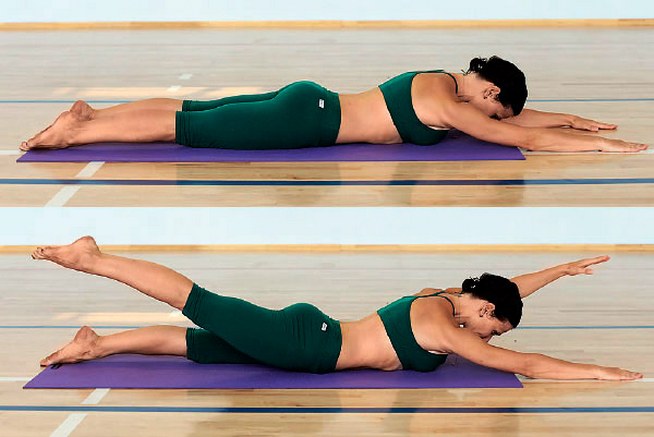
Sitting for a long time, especially taking the wrong posture, you use muscles and spine unilaterally. Neck, hip and rear pain are a consequence and lead to further changes. The voltage and disorders are melted, supporting and postural muscles are structured in a certain way. Through alternating efforts and rest pain in the back can be removed. With a direct pose, intervertebral discs are loaded with axial and remain healthy.
- Over time, unused muscles become weaker and reduced.
- Unilateral excessive muscles react to tensions.
- This vicious circle can lead to the "wear of the spine".
Training video will help everything correctly even at home. The complex helps reduce pain. It can be used to prevent it.
Performing exercises in the position on all fours
Osteochondrosis is a degenerative process. It contributes to the destruction of the vertebrae. Naturally, it is better to respect the prevention measures and begin timely treatment. It will give the opportunity to save mobility.
The list of exercises "On all fours" can also be performed at home, because it has nothing complicated in it:
- On the breath of opposite leg and hand need to be lifted parallel to the floor. On the exhalation both limbs should be omitted. Legs and hands alternate alternately.
- It is necessary at a slow pace to lower the pelvis on the heels, sit so many seconds and climb back. Palm can not waste from the floor.
- Alternately should raise the right and left foot parallel to the floor.
- It is necessary to raise your head up, breathe and slowly get back in the lumbar region down. On the exhalation, the spine should be taken up.
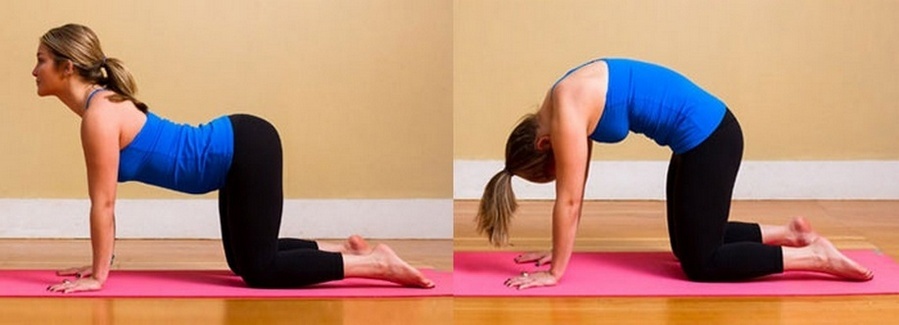
Whatever problems with the backs, exercise, used during osteochondrosis, will help get rid of long-standing pain, restore the functionality of the skeleton. Treatment in this way is useful not only for the lower back, but also with osteochondrosis, which is localized in the neck. Exercises for osteochondrosis of the lumbar department appoints only a doctor. Self-treatment is not allowed.
In any case, the exercises must be performed correctly. To do this, it is better to watch the learning video. In addition, such movements can be performed for the prevention of osteochondrosis. Be healthy!
Osteochondrosis is one of the most common diseases today. It is often referred to as a person's board for straightening, as the spine is the spine. Overweight, load on the back, sitting work, lack of exercise - all this can lead to osteochondrosis. Moreover, they can suffer both adults and adolescents. But, despite all the seriousness and soreness, this subsection is amenable to prevention and treatment. And the most common way is the gymnastics.
Medical gymnastics with spinal osteochondrosis
In medicine osteochondrosis it is customary to divide for several subspecies:
- Cervical. It is manifested in the form of a minor pain in the back of the head, as well as the side sections of the neck. With cervical osteochondrosis, all movements of the head become difficult, and the pain can handle or fingers and cause a feeling of "goosebumps". This is one of the most dangerous speciesbecause It is in the area of \u200b\u200bNeck that are important vessels and arteries that feed the brain.
- Breast. It is often confused with heart attack, angina, pneumonia and other diseases. The chest osteochondrosis occurs in the form of pain between the ribs, which is felt with deep breaths, sharp corners of the body or during physical exertion.
- Lumbar. The most common type of osteochondrosis. It manifests itself in the form of strips or pain in the back and lumbar department. At the occurrence of pain, there is a feeling of numbness of the skin and limbs. The patient cannot neither get into either turning on the parties. At the same time, pain can also go through suddenly, as started.
- Combined. This type of osteochondrosis may occur immediately in several spinal colors. The symptoms in this case correspond to those sites that are described above.
Gymnastics in osteochondrosis of the spine is the best measure of prevention and treatment, the basis of which is naturally the movements of the body. Today, for each department there is a set of exercises. We will analyze the simplest and more efficient.
- Gymnastics for neck at osteochondrosis(Exercises are performed standing):
- stract your back and take the original foot position on the width of the shoulders. Slowly tilt the head of the lobby and hold it in this position for 10 seconds, slightly straining muscles. Slowly return to its original position. Do the same with the inclination to the other side. Exercise must be made 15 times;
- slowly tilt the head forward, delay for 10 seconds and strain the muscles of the neck and the nape. Smoothly return to its original position. Slowly tighten the head back, without touching the back of the back, and delay for another 10 seconds. Repeat the exercise 15 times;
- turn the head of the lobby and try to reach the chin to the shoulder for 10 seconds. Return your head to the original position and do the same else. Repeat 15 times.
The gymnastics in osteochondrosis of the cervical department can be done in the sitting position. These exercises will great help relax with the slightest signs of fatigue during work.
- stand straight, legs on the width of the shoulders. Slowly and smoothly "sigble" back and pull the chin to the stomach. Shoulders must reach each other. Hold in the same position for 10 seconds and start slowly blending your back, pulling the blade and slightly thumping your head back. Hold for another 10 seconds and repeat the exercise 10 times;
- stretching the circular movements shoulders 10 times first ago, and then forward;
- squeeze your hands in the fists and pour them into the back under the blades. Rock back and delay in this position for 10 seconds. Then slowly cuddle the back and lean forward, clasping yourself with your hands. Repeat 10 times.
This gymnastics also will also fit with cervical osteochondrosis.
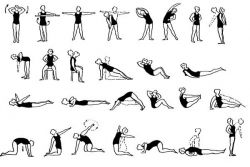
Remember that therapeutic gymnastics with lumbar osteochondrosis and its versions are performed slowly. In no case do not make sharp movements, because It may apply even greater harm to your spine. Regular exercise performs for 15 minutes a day will help to avoid pain and becomes good prevention of other diseases of the spine.



